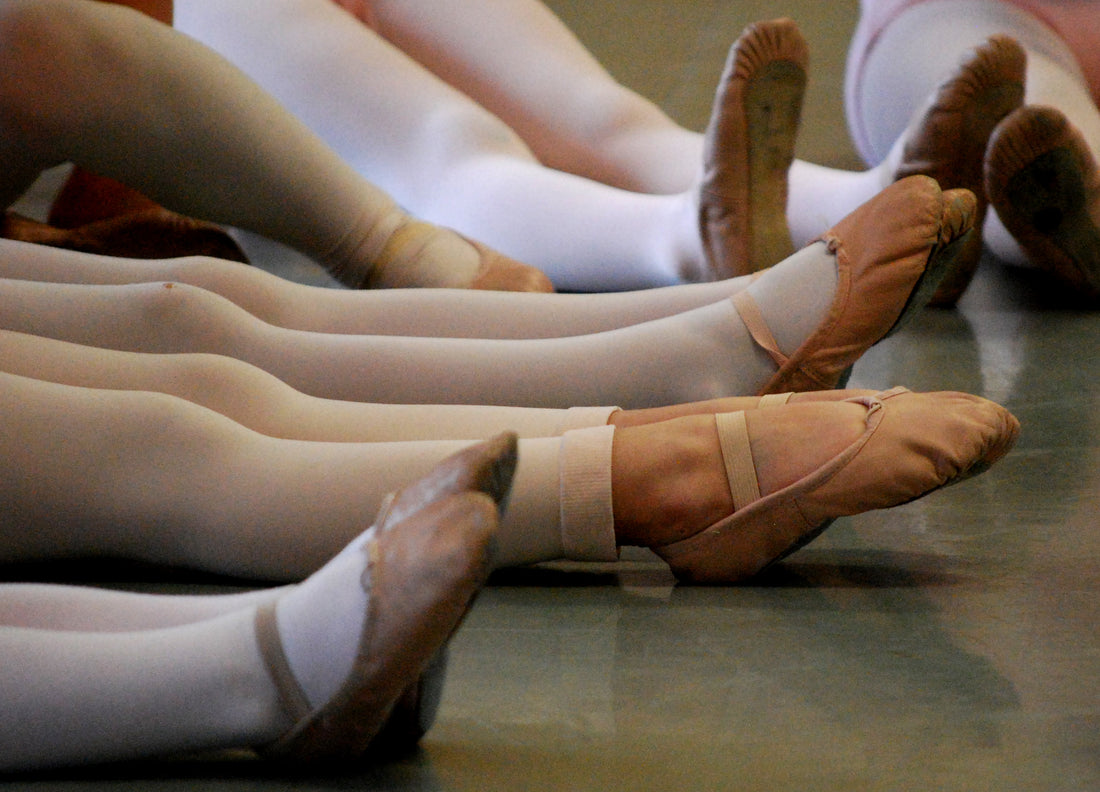What do Misty Copeland, Natalia Osipova, Chi Cao, and Carlos Acosta have in common with all of our young dancers who spend a lot of time perfecting their technique? Bad feet. The very nature of dance is very hard on the feet and ankles. While these iconic dancers make every step look easy, they too are suffering through dancer’s feet.

Knowing that foot and ankle problems plague all dancers, we asked local podiatrist Dr. Jared Bramlett if he’d be willing to share some of his knowledge about dancing and foot care. Bramlett, himself the father of a young dancer, was happy to share his wisdom on prevention and what to do when the pain is worse than “usual.”
From the Barre: We all know that dance is hard on the feet. Many ballerinas joke about how hideous their feet look with blisters, black toe nails, and nasty infections. What are three to four of the worst foot problems that dancers suffer from?
Bramlett: Dancers, due to the nature of their activity, are prone to developing multiple foot problems. The first of these is plantar fasciitis, which is inflammation of a ligament called the plantar fascia. The plantar fascia attaches to the bottom of the heel, and traverses the entire arch of the foot into the toes. Dancers who have a flatfoot, and who dance for long periods of time on hard surfaces, are prone to developing this condition.
Ankle sprains are another common problem. Throughout a routine, a dancer undergoes multiple directional changes, twists and turns, as well as jumps and landings, which could lead to the ankle turning in an inverted fashion.
Another common problem is Achilles tendonitis. When a dancer performs a leap or a turn, they are pushing off the ball of their foot, which requires the use of the Achilles tendon. This maneuver is repeated multiple times during a dance. This leads to overuse, thus inflaming the Achilles.
A final problem encountered by dancer's is a stress fracture, which is caused by repetitive stress to a weakened area of a bone. In dancer's, this usually occurs in the metatarsals, due a dancer landing repeatedly on the ball of the foot.
FTB: What can they do to prevent or lessen these issues?
Bramlett: Dancers are mainly barefoot, or in ballet slippers, while dancing. These scenarios provide little support for the foot.
Prevention, by in large, occurs outside the dance studio. Dancers -- at all times -- should be in a good supportive, stable shoe when not dancing, especially those who have a flatfoot. An orthotic, or arch support, can provide further support to the arch, and relieve stress on the ball of the foot.
Providing adequate arch stability goes a long way in preventing plantar fasciitis, Achilles tendonitis, as well as stress fractures.
Other forms of prevention include Achilles/calf stretching both before and after class, and strengthening the muscles that control toe flexion. This can be achieved by using your toes to scrunch a towel placed on the ground.
FTB: What are some warnings of potentially bigger problems?
Bramlett: The main warning sign of a potentially bigger problem is foot or ankle pain that is not relieved with rest.
The vast majority of foot and ankle issues that a dancer may experience are usually relieved by resting and supporting the area. When the pain continues even after a period of rest, that is a sign of overuse, which could lead to a stress related injury, or ultimately a fracture.
When a dancer complains of foot related pain, the first line of defense is rest. If that doesn’t work, then he or she needs to see a podiatrist before it goes on too long. The longer the problem is ignored, the worse it will get.
FTB: When do foot problems first show up in dancers?
Bramlett: Foot problems can occur at any age in a dancer. A lot of it depends on the amount of time a child dances each week, coupled with the style of dancing.
FTB: What are some preventative things that dancers can do to take care of their feet?
Bramlett: Both a parent, as well as the dancer's instructor/school play a major role in preventing foot related issues. Make sure the dancer is in shoes at all times while not dancing, specifically shoes with a stable arch.
Dancer's should not be going "on pointe" until the bones of their feet have reached skeletal maturity, which usually occurs around age 11 or 12. A dance instructor should not allow a child to go on pointe before this, as they run the risk of damaging a bone's growth plate, which could cause issues into adulthood. If there is a question as to whether a child is ready for pointe work, have a Podiatrist evaluate your child, and obtain an x-ray to asses a child's growth.
As one ballerina says on the blog Quora, “… I think that ballerina feet look ugly because they are unnatural. Ballet itself is very unnatural, but the audience generally doesn’t realize how difficult it is for ballet dancers to move the way that they do until they see the practice it requires and the effect it has on our bodies. Ballet feet are an example of the strength and dedication required to dance ballet beautifully.”
Image: MorgueFiles: kakisky

